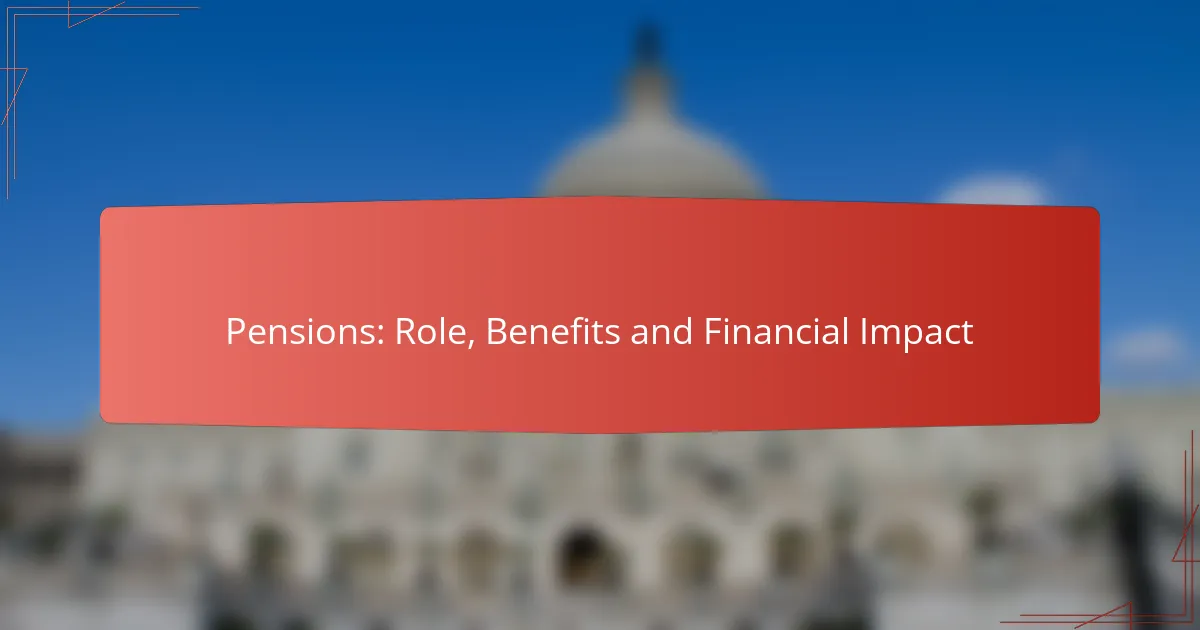State governors play a pivotal role in investing public funds to enhance infrastructure, education, and public health, ultimately aiming to stimulate economic growth. The returns on these investments can manifest as job creation and improved services, influenced by the investment type and economic conditions. However, governors must navigate various risks, such as market fluctuations and political challenges, which can impact the success and sustainability of their initiatives.

How do state governors invest public funds?
State governors invest public funds through various channels aimed at improving infrastructure, education, public health, and economic growth. These investments are crucial for enhancing the quality of life for residents and stimulating local economies.
Investment in infrastructure projects
Governors often prioritize infrastructure projects, including roads, bridges, and public transportation systems. These investments can lead to job creation and improved connectivity, which are essential for economic growth.
Funding for infrastructure typically comes from state budgets, federal grants, and public-private partnerships. It is important for governors to assess the long-term benefits versus the immediate costs to ensure sustainable development.
Allocation to education funding
Education funding is a significant area where state governors allocate public funds, focusing on K-12 schools and higher education institutions. This investment aims to improve educational outcomes and workforce readiness.
Governors may use state revenue, such as income and sales taxes, to support educational initiatives. Balancing funding across urban and rural areas is crucial to ensure equitable access to quality education.
Public health initiatives
Public health initiatives funded by state governors include programs for disease prevention, mental health services, and access to healthcare. These investments are vital for maintaining community health and reducing healthcare costs in the long run.
Governors often collaborate with health departments and non-profit organizations to maximize the impact of these initiatives. Effective allocation of funds can lead to improved health outcomes and increased life expectancy for residents.
Economic development programs
Economic development programs are designed to stimulate job creation and attract businesses to the state. Governors may invest in tax incentives, grants, and workforce training programs to foster a favorable business environment.
These programs can vary widely in scope and effectiveness, so it is essential for governors to track their performance and adjust strategies as needed. Engaging with local businesses and communities can provide valuable insights into the most effective investments.

What returns can state governors expect from investments?
State governors can anticipate a variety of returns from investments, including economic growth, job creation, and improved public services. These returns often depend on the type of investment, the economic environment, and the strategic goals set by the state leadership.
Increased job creation
Investments made by state governors can lead to increased job creation, particularly in sectors like infrastructure, technology, and renewable energy. For instance, funding for new transportation projects can create thousands of construction jobs while boosting local economies.
Governors should consider partnerships with private sectors to maximize job creation. Engaging local businesses in investment projects can enhance community support and lead to sustainable employment opportunities.
Enhanced public services
Investments can significantly enhance public services, including education, healthcare, and public safety. For example, investing in modernizing schools can improve educational outcomes and attract families to the state.
Governors should prioritize investments that address pressing public needs. Allocating funds to upgrade healthcare facilities can lead to better health outcomes and reduce long-term costs for the state.
Long-term economic growth
Long-term economic growth is a critical return on investment for state governors. Strategic investments in technology and innovation can foster a more competitive economy, attracting businesses and talent.
To ensure sustainable growth, governors should focus on diversifying the economy and investing in sectors with high growth potential. This approach can mitigate risks associated with economic downturns and create a resilient economic environment.

What risks do state governors face with investments?
State governors encounter various risks with investments, including market fluctuations, political challenges, and budget limitations. These factors can significantly affect the performance and stability of state-funded projects and initiatives.
Market volatility impacts
Market volatility can lead to unpredictable changes in investment values, affecting state revenues and financial planning. For example, a sudden downturn in the stock market may reduce the returns on pension funds, which are crucial for state employee benefits.
Governors must monitor market trends closely and consider diversifying investments to mitigate risks. Strategies such as allocating funds across different asset classes can help cushion against significant losses during downturns.
Political opposition
Political opposition can hinder investment strategies, especially if there are disagreements on fiscal policies or project priorities. Governors may face pushback from legislators or constituents who disagree with certain investments, leading to delays or cancellations.
To navigate this risk, effective communication and stakeholder engagement are essential. Building coalitions and presenting clear data on the benefits of proposed investments can help secure necessary support.
Budget constraints
Budget constraints pose a significant risk to state investments, as limited funds can restrict the scope and scale of projects. Governors must prioritize spending and make tough decisions about which initiatives to fund, often balancing immediate needs with long-term goals.
Implementing a rigorous budgeting process that includes forecasting and scenario planning can help manage these constraints. Regular reviews of expenditures and potential revenue sources can also provide insights into adjusting investment strategies as needed.

How do state governors measure investment success?
State governors measure investment success primarily through financial metrics, public feedback, and economic indicators. These methods provide a comprehensive view of how well investments are performing and their impact on the state’s economy and residents.
Return on investment (ROI) metrics
Return on investment (ROI) metrics are essential for evaluating the financial performance of state-funded projects. Governors typically assess ROI by comparing the net profit generated by an investment to its initial cost, often expressed as a percentage. A positive ROI indicates that the investment is yielding benefits that exceed its costs.
For example, if a state invests $1 million in infrastructure and generates $1.5 million in economic activity, the ROI would be 50%. Governors should aim for ROI benchmarks that reflect the specific goals of their investments, whether in job creation, revenue generation, or social impact.
Public satisfaction surveys
Public satisfaction surveys are a crucial tool for governors to gauge the effectiveness of their investments from the citizens’ perspective. These surveys often include questions about residents’ perceptions of services, infrastructure quality, and overall satisfaction with state initiatives. High satisfaction levels can indicate successful investments that meet community needs.
Governors should conduct these surveys regularly and analyze trends over time to identify areas for improvement. Engaging with the public through town halls or online platforms can also enhance the feedback process and ensure that investments align with constituents’ priorities.
Economic indicators analysis
Economic indicators analysis involves examining various metrics to assess the broader impact of state investments on the economy. Key indicators include unemployment rates, GDP growth, and tax revenue changes. By monitoring these factors, governors can determine whether their investments are fostering economic growth and stability.
For instance, if a state invests in renewable energy, tracking job creation in that sector and overall energy costs can provide insight into the investment’s success. Regularly reviewing economic indicators allows governors to make informed decisions and adjust strategies as needed to maximize the benefits of their investments.

What frameworks guide state investment decisions?
State investment decisions are primarily guided by frameworks that ensure fiscal responsibility, risk management, and alignment with public policy goals. These frameworks typically include legal statutes, financial regulations, and strategic investment plans that dictate how states allocate resources and manage investments.
State budgetary guidelines
State budgetary guidelines are essential for managing public funds and ensuring that investments align with fiscal policies. These guidelines often dictate how much can be allocated to various sectors, including infrastructure, education, and healthcare, while maintaining a balanced budget.
When developing investment strategies, states must consider factors such as revenue projections, expenditure limits, and economic conditions. For instance, a state may set aside a specific percentage of its budget for capital projects, which can range from 5% to 15%, depending on its financial health and priorities.
To avoid common pitfalls, states should regularly review their budgetary guidelines to adapt to changing economic circumstances. Establishing a clear framework for evaluating investment opportunities can help ensure that funds are used effectively and yield positive returns for the community.



